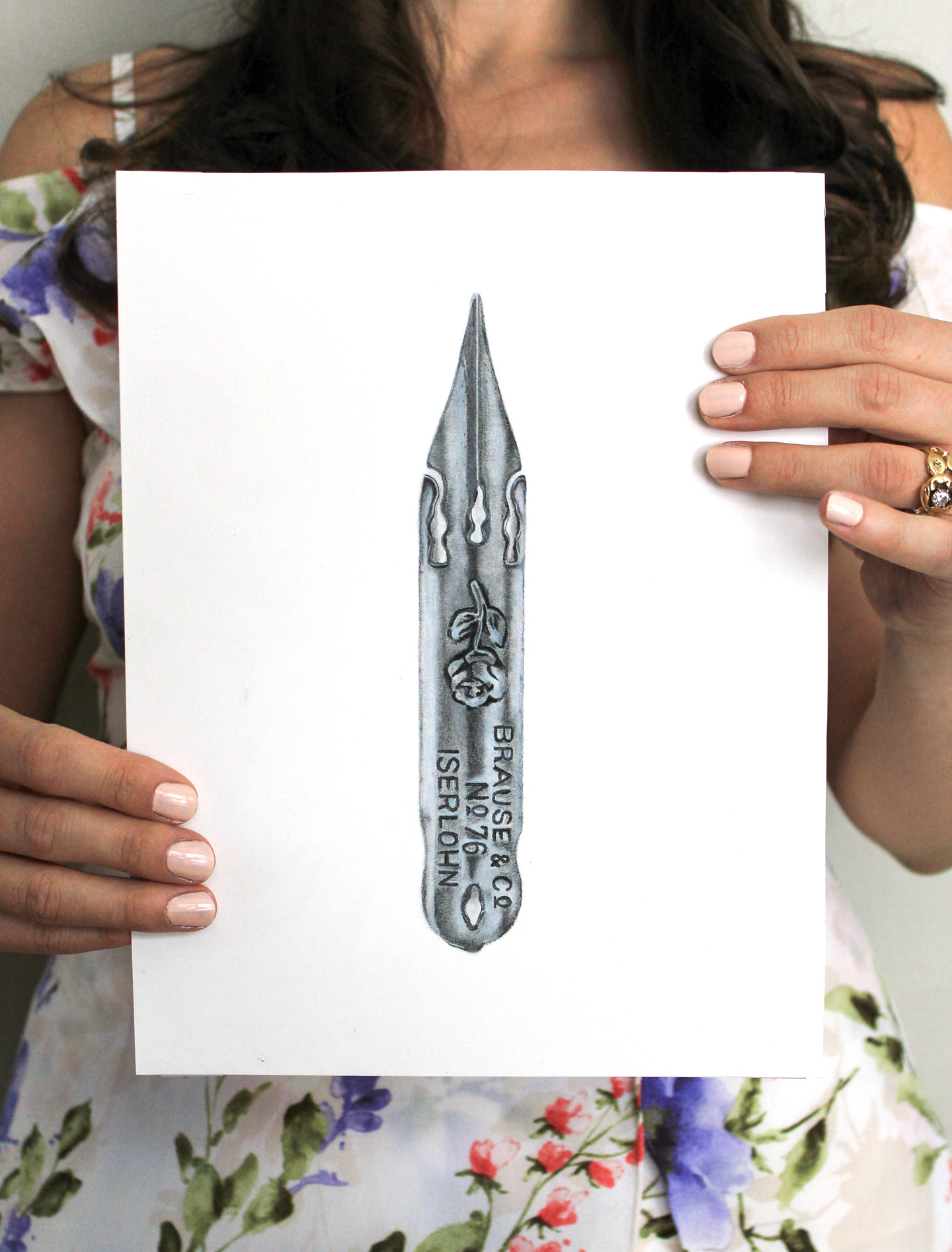
I like to send a homemade birthday card whenever I can; the problem, however, is that cards can take forever to make! Not only do you have to come up with a cool idea — which is hard enough! — but then you have to put the idea in motion. Today’s tutorial should alleviate the two issues that may prevent you from making DIY cards: brainstorming time and creation time! This homemade birthday card idea is creative, innovative, and only involves a couple of steps.
The Card
To get started, you’ll need a 10″ x 7″ (254 mm x 178 mm) piece of chipboard or card stock. I like a grocery bag sort of color, but you can use any color that appeals to you!

Next, fold the card stock in half to make an A7 card. To ensure a crisp fold, you can go along the crease with a bone folder or a ruler.

Next, draw two wavy lines in the bottom and top left corners of the card using a black or brown marker (or acrylic paint, or crayon … whatever you have on hand will be fine!). Once your lines are drawn, make little spiky lines shooting off of the wavy lines as shown below.

At this point, you’ll want to search around your house for scraps of paper you have that are green. Anything will work, even if it has a design or writing on it! You can see my roundup of green paper in the photo below:

Cut leaf shapes of all sizes out of your papers. Alternate the paper you are cutting, and progressively place the leaves on the end of a little spiky line to get a visual of what the final card will look like.

The card should end up looking something like the photo below once all the leaves are cut out.

Using your placement of the leaves as a guide, glue all of your leaves down.

You can flip the card over and cut the edges of the overhanging leaves so the card will fit in an A7 envelope. (Or, if you like the overhanging leaves look, you can keep them as-is and deliver the card in a larger envelope!)

Once the leaves are cut, the card will look something like this:

You may find that you want to make some tweaks to the branches. In this case, I felt that the branch needed to be thickened up a little bit with an additional stroke from the marker. A thicker branch visually balances out the leaves better because they are so striking.

Next, use a pencil to write out “Happy Birthday” in the calligraphy style of your choice; I’m using Amy Style in the example below. Writing your calligraphy with a pencil first helps to make sure your words will fit in the allotted space and are aligned!


You can absolutely be done with your homemade birthday card at this stage, but it never hurts to add a few drops of Finetec Arabic Gold! The gold gives the card a little extra sparkle and personality. If you don’t have any Finetec around, some glitter or glued sequins would look nice, too!

And voilà! A beautiful, fuss-free homemade birthday card that anyone — male or female — will wholeheartedly enjoy!

The Envelope
You took the time to make a lovely card, so why not make some creative mail art to accompany it? This envelope is fuss-free and follows the theme of the homemade birthday card!

First, you’ll want to draw guidelines to create a diagonal Amy Style envelope; you may use the printable Amy Style Envelope Helper from the Amy Style Video Course (Lesson 4) to aid you! For detailed instructions on how to make a diagonal envelope, you can read the Envelope Calligraphy Spacing Tips and Techniques post (particularly the “Alternative Envelope Spacing: Diagonal” section). If you are calligraphing on a dark-colored envelope, you might consider using a soapstone pencil, which makes bright white erasable guidelines.

Once your guidelines are drawn, you will want to start writing out your recipient’s address. I have chosen to write in Amy Style to correspond with my homemade birthday card, but you could switch it up and use any hand-lettering or calligraphy style that appeals to you. The white ink I am using here is Winsor & Newton, but you can work with any ink type and color you prefer!


Once you have written out your recipient’s address, add a stamp (or a stamp collage) to the upper right corner of your envelope. Then, use your calligraphy ink to draw a branch in the space above the address on the left of the envelope. The branch should look roughly like the one pictured below.

Follow the same process that you used on the birthday card to make and arrange the leaves.

Once the leaves are glued down nice and flat, you’re ready to send your homemade birthday card and envelope ensemble!

This birthday card design is one of my favorites because it’s elegant, but not overly feminine. I also love how it upcycles scraps of paper that you have around the house; the variation of papers used to make the leaves mimics leaves in nature, which are not all exactly the same color!

I hope you enjoyed today’s tutorial, and of course, if you have any questions I am happy to answer! In the last TPK blog post, I promised you a video of Rodger Mayeda’s pen-making process, but, alas, I want to make sure the video is beautifully edited and I haven’t finished playing with it in Premiere Pro yet! I hope a raincheck is okay? 🙂
Thanks very much for reading the TPK blog; I really appreciate that you are here! Have a good weekend!
Warmly,


























